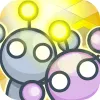Take a look inside 5 images
Lightbot : Programming Puzzles
Pros: Simplifies complex concepts, like looping and procedures.
Cons: Gets hard fast, so kids need to be up for the challenge.
Bottom Line: Challenging programming game best for motivated learners.
With the push to get students programming, teachers need a variety of tools to reach a variety of learners. They could offer kids a choice of several programming games or introduce a new game periodically. Lightbot is a good one to use to introduce looping and procedures because the design, with separate folders for each, really makes sense. Levels are quite challenging, however, so having other programming-game options for kids who get frustrated or permanently stuck is a good idea.
Lightbot is a puzzler that teaches kids concepts used in computer programming. This programming app was developed for kids by an undergraduate student who's been coding since he was a kid himself. Brief instructions are included at the beginning of each level -- just what you need to know when you need to know it. The level of challenge ramps up very quickly, making this best suited for older kids and teens.
Students move a robot along a Q*bert style maze by dragging commands into place, lighting up specified tiles as they go. Completing one level unlocks a more challenging level that introduces new programming concepts. Kids collect stars for meeting certain requirements -- like completing the program in no more than a specified number of steps. They can collect up to 20 stars over the course of 40 levels, working with programming concepts like procedures, loops, conditionals, and overloading.
This very challenging puzzler does a great job of teaching some kids programming concepts. Lightbot is most likely to engage kids who'd be drawn to programming anyway, however, mostly because of the quickly escalating challenge. There are no user accounts, so only one player can work through the levels at a time, but kids can erase and start over for a new player. The level of challenge ramps up very quickly, so younger kids may enjoy more programming play time with My Robot Friend or Kodable. It's easy to get stuck for a while on some levels, and no hints or clues are offered. Kids get as many chances to succeed as they need, though, and they'll learn from each failure.














